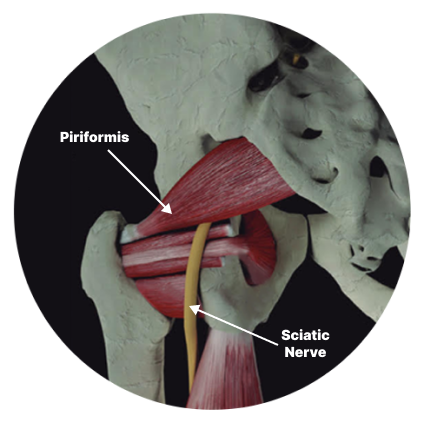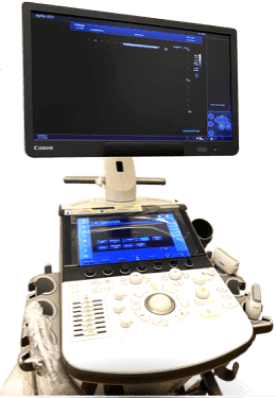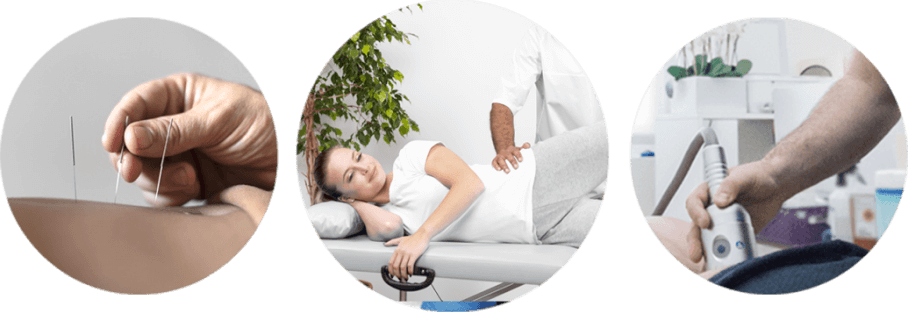Deep Gluteal Syndrome (DGS) arises deep within the gluteal space, causing pain and/or numbness in the buttocks, at the back of the thigh, or in the hip region, and often radiating along the path of the sciatic nerve. DGS is not caused by disc herniation, but by entrapment of the sciatic nerve, inhibiting its ability to glide freely. Common sites of sciatic nerve entrapment are the piriformis muscle, the sciatic foramen and the ischial tunnel of the pelvis.
or
Dr. Lev Kalika has been an active member of the International Society of Medical Shockwave) (ISMST) since 2007, and has performed over three thousand ESWT procedures. He is a world renowned expert in ultrasound guided dry needling and has published multiple peer-reviewed articles about ultrasound guided procedures.
He uses ultrasound guidance to perform dry needling, injection therapies and ESWT for deep gluteal syndrome treatment. Dr. Kalika has developed his own unique approach to gluteal pain, which is cardinally different from conventional deep gluteal physical therapy.
Dr. Kalika’s expertise makes NYDNRehab the clinic of choice for deep gluteal physical therapy in NYC.
At NYDNRehab we take the guesswork out of diagnosis and treatment by leveraging the power of advanced technologies. We believe that what cannot be measured cannot be successfully treated. By accurately pinpointing the root cause of your condition and precisely measuring your response to treatment, we can accelerate your recovery and ensure that your condition is completely resolved.
In addition, we offer personalized one-on-one deep gluteal physical therapy designed for the individual patient. We recognize that no two conditions are identical, and that each patient is unique. By personalizing your treatment, you get the exact care you need for quick and successful results.
Deep buttock pain that runs down the back of the leg
Pain in the low back
Random shooting pains
Pain accompanied by tingling or numbness
Increased pain with hip flexion coupled with knee extension
Pain when walking uphill or climbing stairs
Pain that worsens at night
Tight or inflamed piriformis muscle
Excessive sitting
Driving
Overuse from sports or exercise
Being out of shape
Overweight or obesity
Injury from a fall or other trauma

GPS is an umbrella term that covers deep gluteal pain conditions with similar or overlapping symptoms. Because the lumbopelvic region houses a complex network of structures including muscles, bones, nerves, connective tissues and reproductive organs, all occupying a relatively small space, it is crucial for the various components to be able to glide smoothly without impediment from other structures.
When the sciatic nerve, the largest nerve in the body that innervates the lower extremities, becomes entrapped or impeded by other structures, interfering with its ability to glide among them, you may experience pain, discomfort and dysfunction anywhere along its path. Deep gluteal pain can sometimes mimic low back pain, leading to misdiagnosis and unsuccessful treatment.
piriformis muscle
sciatic foramen
ischial tunnel of the pelvis

At NYDNRehab, we use the highest resolution diagnostic ultrasonography to accurately identify the location and cause of deep gluteal pain. Ultrasound imaging allows us to view the sciatic nerve with the patient in motion, so we can observe its movement in the deep gluteal space. We are then able to devise a deep gluteal syndrome treatment plan designed to meet the specific needs of the individual patient.
In addition to ultrasound imaging, your diagnostic exam may include:
A thorough health history that reviews your past injuries, physical activities and lifestyle factors that may contribute to deep gluteal pain
A clinical exam that may include specially designed tests to rule out other causes of pain and dysfunction.
In mild cases of deep gluteal syndrome, physical therapy alone may be enough to alleviate pain, but more advanced conditions made need additional treatment modalities such as:

Extracorporeal shockwave therapy (ESWT) to stimulate deep gluteal tendon healing.
Percutaneous neuromodulation to reduce pain and reboot the sciatic nerve.
Electromagnetic transduction therapy (EMTT) to reduce inflammation in the nerve and muscles.
Prolotherapy to improve sacroiliac joint stability and reduce shear forces on the nerve.
Ultrasound guided dry needling to release trigger points and deep gluteal fascia.
Steroid injections to treat extreme inflammatory reactions.
Sciatic nerve hydro dissection to reduce adhesions between the nerve and the fascia, and restore smooth gliding among bones and muscles.
Deep gluteal physical therapy to correct muscle imbalances, improve hip and pelvic stability, and restore pain-free movement
Staying physically active is key to maintaining stability and mobility in the hip and lumbopelvic region. Avoid overtraining, and give your muscles time to rest and recover between workouts. Include stretching as part of your workout routine to avoid overly tight piriformis muscles and fascia.
If you spend most of your time sitting or driving, begin a regular fitness regimen to offset the negative effects of sedentary activities.

Pain and dysfunction are not normal, and you don’t have to live with them. At NYDNRehab, we offer conservative and non-invasive treatment plans, tailored to the individual patient. Personalized one-on-one treatment ensures that you get the results you came for, in the least amount of time possible. We know that physical therapy is time consuming, and we believe that time should not be wasted. Contact NYDNRehab today, and get rid of your deep gluteal pain so you can get back to doing the things you love.
Deep gluteal syndrome, formerly referred to as piriformis syndrome, is an overuse syndrome characterized by buttock pain accompanied by symptoms of sciatica. The condition is often caused by the sciatic nerve becoming entrapped and impinged around the piriformis muscle in the sub-gluteal space.

Dr. Lev Kalika is a world-recognized expert in musculoskeletal medicine. with 20+ years of clinical experience in diagnostic musculoskeletal ultrasonography, rehabilitative sports medicine and conservative orthopedics. In addition to operating his clinical practice in Manhattan, he regularly publishes peer-reviewed research on ultrasound-guided therapies and procedures. He serves as a peer reviewer for Springer Nature.
Dr. Kalika is an esteemed member of multiple professional organizations, including: